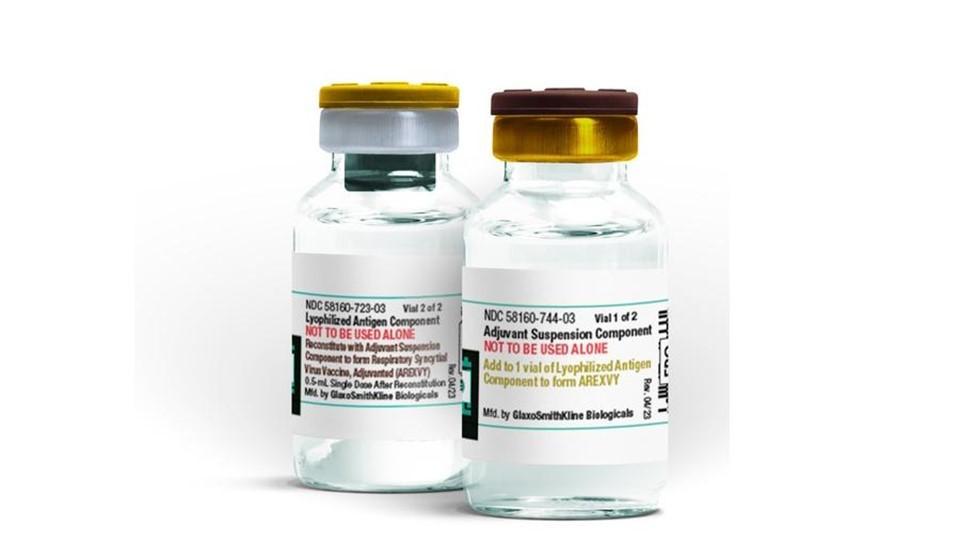Market Access in Europe: The view ahead

Paul Tunnah interviews David Round
Cegedim Dendrite
As a key partner supporting the pharma industry’s initiatives to engage with an increasingly diverse customer base, Cegedim Dendrite recently conducted a pan-European survey to evaluate the trends in Market Access. pharmaphorum was invited to attend the launch of the results from this Market Access Industry Report, which identified some interesting emerging themes that could shape the way pharma does business in the future.
Following the presentation, pharmaphorum invited the UK General Manager, David Round, to discuss his key highlights from the report and, based on his historic expertise, provide a perspective on what the results mean for pharma companies striving to adapt to the new commercial environment.
To listen to the full interview, please click on the play button below, with a shortened transcript of some key highlights shown in print below.
[media id=2 width=320 height=24]
Selected highlights
PT: David, thanks for taking the time to talk to me about Cegedim Dendrite’s recent Market Access industry report. Before we discuss your findings in more detail, perhaps you could just give a quick introduction to your current role?
DR: Yes, I’m the General Manager for Cegedim Dendrite in the UK, but actually as part of that role I’ve been a sponsor of a market access initiative across Europe over the last year to 18 months.
PT: What inspired Cegedim Dendrite to conduct this research, and who did it involve?
DR: Well we’ve been asked for information around Market Access by our clients for some time, and we’ve been leading the way in the provision of that information, so we conducted a survey which was answered by almost 200 key pharmaceutical executives across Europe into their views on Market Access and the challenges that face pharma.
PT: Market Access is a very broadly used term, so perhaps you could clarify what it means to you?
DR: I would agree that you get very different definitions of Market Access, but in the context of the sales and marketing clients that we deal with we view Market Access as the process by which a pharma company would get its products to market, so that ultimately they become available to patients.
PT: What did the survey reveal are the key findings about the rather complex European Market Access environment that pharma now operates in?
DR: One of the biggest ones that stood out for me was that 83% of those who replied see that the move from prescriber to payer is the key challenge around Market Access that they face, and interestingly 77% of them also felt that the current economic crisis was a challenge around Market Access. Although the move from prescriber to payer has been happening for a number of years, and with an economic crisis that’s only been around for maybe 18 months, I think what that’s done is bring all of this to the forefront of people’s minds.
PT: When you look back over the last five to 10 years, how would you say the environment has changed most significantly?
DR: Well I think it’s this move from prescriber to payer, but if you look at the European market as a whole what you’d see is that in the UK it’s taken 10 to 15 years to move from this particular prescriber to payer model, but actually within the EU top five some of those markets have only taken five to 10 years, and in some of the more emerging markets (Eastern European markets, North African markets) they’re seeing this change in three to five years.
PT: You’ve got a good perspective of the industry, how would you say the pharma industry has reacted to this change over that period?
DR: I think they’ve reacted with key account management which, as our survey found, the vast majority of pharmaceutical organisations believe is the key to impacting on Market Access across the whole European market.
PT: Key account management, or KAM as it’s often called, is a very widely used term rather like Market Access, but I sense again that KAM means very different things to different companies. How would you define it?
DR: I would try and describe it quite simply as co-ordinating the many touch points within an organisation that deal with those key accounts, and defining very clear strategies for getting the pharmaceutical company’s message inside that account.
PT: How successful do you think pharma has been in implementing KAM as a solution?
DR: I think it’s been relatively successful. Some of the most successful implementers of key account management have been where they’ve driven it really from the top down, from the most senior people in the organisation all the way through the pharma company, and they’ve really empowered their key account managers to make decisions that the pharma company will back up and respond to.
PT: So you’re really putting a lot of trust in your key account managers?
DR: I think you have to select the best people and they’re a different type of people, it’s not just the traditional best rep who becomes a key account manager. The skill set for a key account manager can be very different - yes you need to influence, but you also need to manage a business, your territory, whatever that may be, whether it be a single PCT or a region in Italy.
PT: What would you say are the other critical success factors to really have a strong and successful key account management approach?
DR: Alongside a tool that allows you to effectively share information across the whole organisation, being able to identify your key stakeholders is key because if your strategy is to influence the people who matter you really do need to know who those people are, not just it’s that role inside that organisation.
PT: We’re talking about a very diverse group of stakeholders across payers, providers and prescribers in different settings, so what sort of information do you think pharma can use to identify these people?
DR: Well I think that there is a great deal of information out there, and some would say Google is our friend but what a pharma company needs is a supplier and partner who can help it to almost sort the wheat from the chaff, to identify what is the important information, but also to identify and spot the trends that are coming, because as the healthcare environment changes sometimes it needs a view from outside to spot the long term trends and equip pharma companies to be able to deal with them when they actually get here.
PT: What other major challenges do you think the new market access environment has presented to pharma?
DR: I think one of the major challenges is the need to demonstrate a much better return on investment for new products that are coming to market, and also to demonstrate a much better role in the whole care pathway. I think the days of being able to say our product is better, or our product is cheaper, are actually long gone. There is a real need to demonstrate how this new product or treatment, or even service, will positively impact the local health economy to actually demonstrate a much better return on investment and how a product can improve the care pathway.
PT: How do you see pharma coping with such diversity in the Market Access controls across the European region?
DR: They are very well placed, and I think that pharma companies do share practice particularly well across their organisations. But I think it’s vitally important to maintain that local knowledge as well, because even if you look at the UK a submission that might be required for NICE is different to a submission that might be required for the SMC.
PT: Do you see any common themes emerging that could lead to a more unified approach across the region?
DR: There’s certainly a move towards regionalisation within pharma that you see at all levels but I think there is still this need for the local knowledge and experience even if you look at product marketing, regionally there will be someone who will be responsible for the overall brand image, but it will fall to the local market to be able to demonstrate and translate that brand into the needs of the local market.
PT: Do you think there are key aspects of European Market Access control that could be adopted by the US, especially in the wake of President Obama’s healthcare reform bill?
DR: Europe is a very diverse market and as each market comes into looking at, maybe health technology assessments, then they’re doing it in a better and more efficient way. I think by the time you hit the US a lot of these strategies will be particularly well developed, and therefore things can be translated to the US or shared with the US much earlier. But the US operates in a very different way with access to information that European pharma companies can only dream of.
PT: Finally David, when you look at this research what do you think the pharma sales and marketing approach will look like in Europe in 2020?
DR: I think a very heavily focused key account management strategy, whether we still call it that in 2020 I’m not sure, but really pharmaceutical companies managing their stakeholders and the stakeholder organisations as a business, maybe almost in a business to business way. This move to key account management is only going to continue, and it has to continue because market access will become even more difficult. Being cheaper or better is no longer good enough unfortunately.
PT: Well David it’s been great to hear your thoughts so thanks very much for your time.
DR: Thank you.
About the interviewee:
DAVID ROUND, UK GENERAL MANAGER, CEGEDIM DENDRITE
David has been General Manager of Cegedim Dendrite UK since December 2006, and has extensive experience in the provision of CRM and Healthcare Professional data serves. Prior to joining Cegedim Dendrite in February 1999, David held a number of roles in and around the implementation of Pharmaceutical CRM systems, focussing primarily on the technical considerations of such solutions, before working for Glaxo Wellcome, where he provided consultancy on Sales and Marketing systems to Glaxo’s international affiliates. David’s career with Cegedim Dendrite UK was initially as the head of various Operational groups, before assuming responsibility of Client Service Delivery. David holds a B.A. (Hons) in Retail Marketing from Manchester University.
ABOUT CEGEDIM DENDRITE
Cegedim Dendrite (Paris:CGM) is the Life Sciences industry's leading provider of Customer Relationship Management (CRM) solutions. Designed specifically for Life Sciences, the company's innovative business solutions incorporate a thorough understanding of local, regional and worldwide trends. Cegedim Dendrite enables more than 200,000 users in many of the world's most innovative companies to stay ahead of market challenges. In addition to CRM, Cegedim Dendrite also provides marketing, data optimization and regulatory compliance solutions in more than 80 countries. Cegedim Dendrite is part of the France-based Cegedim S.A. Group.
For more information please visit www.cegedimdendrite.com
For a copy of the full white paper, please visit www.cegedimdendrite.com/ma-report
What does European market access evolution mean for pharma operations?











